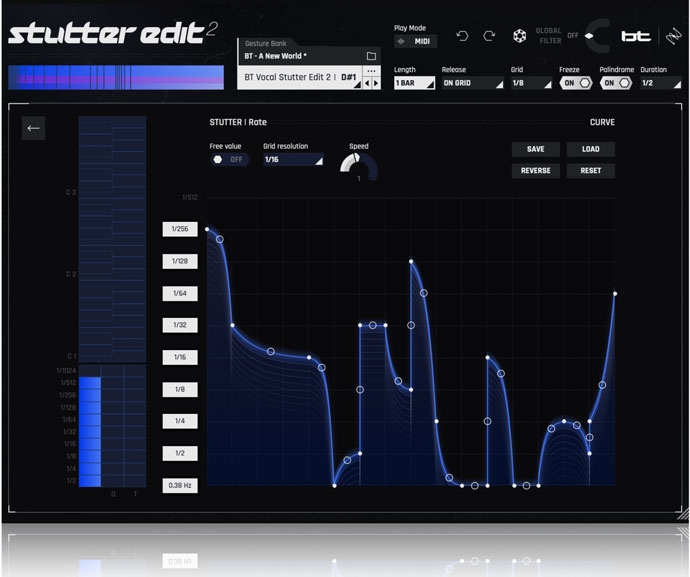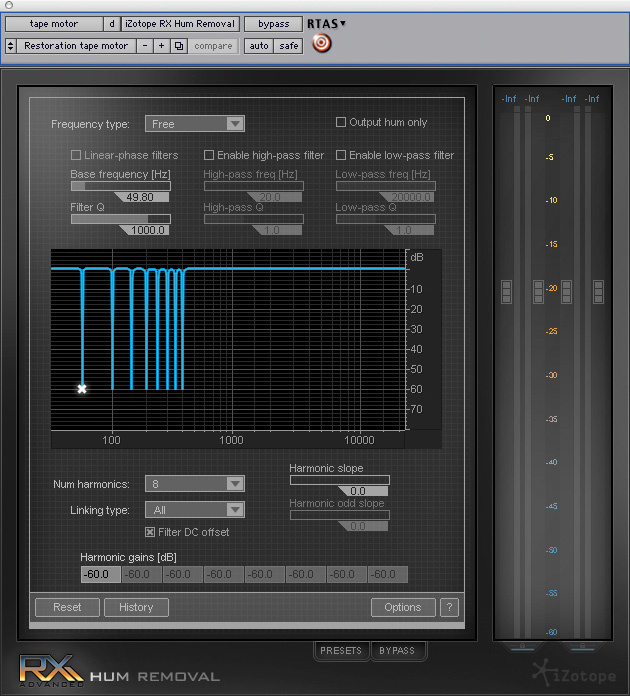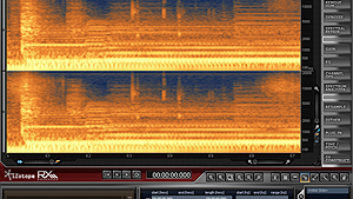Stutter & Buffer. At the heart of Stutter Edit 2 are the Stutter and Buffer controls, letting you blur the lines between melody, rhythm, and sound. Stutter Edit 2 cuts or “buffers” your audio up into razor-sharp slices and plays them back at different speeds. Set a slower stutter for funkier grooves, or create edits so fast that they turn. Attempt crazy vocal effects with RX Elements. Believe it or not, you can use RX creatively, not just for repair issues. Recently I had a direct order from the writer of an audio drama to raise the level of mouth noises on a character, so he could sound more creepy. Izotope Rx 5 Batch Download. Izotope Rx 5 Batchelor. IZotope's RX 5 Audio Editor is in a class by itself when it comes to repairing, restoring, and enhancing audio. Likewise, Mike Thornton, Aka MR. Rx It, offers you the most comprehensive video tutorial series available, covering both RX 5 and RX 5 Advanced with a fine toothed comb filter. Both offer XLR and 1/4' connectivity, polarity switching, and variable phase via a dedicated potentiometer. The IBP incorporates selectable phase shift range and high or low center frequency, while the Phazerbank utilizes a dry/wet control and a selectable low-pass filter with adjustable frequency. The workflow with each unit is the same.
AUTO-ALIGN is an automatic microphone alignment and phase correction plug-in. When recording an instrument with more than one mic, sound tends to reach each microphone at a slightly different time, causing some frequencies to cancel each other out and other frequencies to build up unnaturally. Learn Filter-cutoff-frequency-voyager skills by watching tutorial videos about Moog Matriarch: The Video Manual, More Michael Wohl Final Cut Pro Tips, Mastering Workflows, Edit Photos in Photoshop Elements 2020, Designing Massive Sounds, & more.
Izotope Rx Comb Filter
Clean edits, tonal balance, a brilliant EQ, perfect dynamics, and tasteful ambience—this article is about none of that! Instead we’re going to examine how Nectar 3, RX Elements, VocalSynth 2, and a few bonus goodies, can help you achieve interesting, esoteric, exciting new vocal effects.
1. Harmony vocals with Nectar 3
IZotope RX 6. Trusted by the top audio pros around the world, RX is built on years of extensive research in advanced digital signal processing and machine learning. All that remains is to engage the default comb filter or the optional parametric EQ, and then fine-tune the content that’s removed using DIFF auditioning. Oxford DeClicker. The best free VST's to download. Browse our ever growing library of free VST plugins to use in your productions. Audio terminology can be downright confusing. Even familiar words often take on new meanings when used to describe sound. If you’ve ever been on an audio forum, discussed a mix with a client, or read gear reviews, you’ve likely been pelted by a multitude of technical and descriptive terms. Mixing wtih Izotope. 1: INTRODUCTION INTENDED AUDIENCE FOR THIS GUIDE If you don’t know anything about mixing or mixing software, this Guide is a great place to start.

If you need quick harmony vocals, Nectar 3 provides the ability to add them. You can pan them however you like, change their level, raise or lower their interval, and even, in MIDI mode, select the very notes they’ll be singing.
Izotope Vocal Bundle
Some light processing on the harmonies can be accomplished within Nectar 3 as well, including two-band tonal shaping and time delay. As with the previous iteration, you can solo the harmony vocals only, which opens up a new world of possibilities, as you can now use the Nectar track as a vocal-harmony effects generator in parallel with the original vocal.
Izotope Rx Download

You could, for instance, go fully wide with harmonies, have them only kick in for the chorus, and then add reverb to those harmonies for more ambience. You could sidechain the harmonies with VocalSynth 2 for a gloom pop or future pop sound (more on that later).
Conversely, you could go the unison route: doubled vocals can give you a classic widened effect employed on many pop choruses. Want to take it further? Combine two panned unison vocals with saturation, EQ, and some modulation from the Dimension module, and you can whip up an interesting sound that doubles your lead vocal, beefing it up during important sections.
| Module & Plug-in |
|---|

Overview
Voice De-noise is an intuitive, zero latency de-noiser that offers high quality results on a variety of material.
Voice De-noise can intelligently analyze speech signals and determine the best noise threshold for your signal. In a DAW, this feature can be used to write automation in case you need to override the automatic settings and correct the noise threshold by hand.
How does Voice De-noise processing work?
- Under the hood is a series of 64 psychoacoustically spaced bandpass filters which act as a multiband gate to pass or stop a signal based on user-defined threshold values.
- If a signal component is above the threshold for the filter, it will be passed (not processed).
- If a signal component is below the threshold for the filter, it will be attenuated (processed).
Controls
Izotope Rx 2 Free Download
ADAPTIVE MODE: Analyzes the incoming signal and adjust the noise threshold automatically to compensate for changes in the noise floor. This can be useful for removing noise from recordings with variable noise floor and continual noisy sections, and works well for almost any recording of dialogue and spoken word.
Adaptive mode considerations
- The noise threshold settings in Adaptive Mode may be different from the settings achieved by running Learn to set the noise threshold manually.
- Because the adaptive noise threshold is continually being adjusted, it is set lower to prevent artifacts from occurring.
- The noise threshold settings in Adaptive Mode may be different from the settings achieved by running Learn to set the noise threshold manually.
LEARN: When using Manual mode, you can use the Learn button to set the noise threshold to a noise reference.
Download serato scratch live 2. 3 free.Tips for Learning a noise profile
- Find a passage of pure noise in your audio and use Learn to analyze it.
- Longer selections of noise will set the Threshold Nodes to more ideal locations.
- We recommend finding at least one second of pure noise to Learn your noise profile from.
- Find a passage of pure noise in your audio and use Learn to analyze it.
OPTIMIZE FOR DIALOGUE OR MUSIC: Because dialogue tends to be in short bursts and vocals tend to have sustained notes, we’ve added modes to provide better results when applying Voice De-noise processing.
- Optimize for DIALOGUE reacts to noise changes faster and isn’t meant to handle the noise found in sung vocals.
- Optimize for MUSIC does not attenuate sustained notes and is more transparent when applied to sung vocals.
- Optimize for DIALOGUE reacts to noise changes faster and isn’t meant to handle the noise found in sung vocals.
THRESHOLD NODES: The Threshold Node controls on the frequency spectrum display allow you to modify the noise threshold curve, which can be thought of as the “noise profile.” These six points can be adjusted manually to suit the noise currently in your signal. These controls can be automated to compensate for shifts in the audio’s noise floor.
- In ADAPTIVE Mode, the Threshold Nodes are adjusted automatically in real-time.
- In MANUAL mode, more than one Threshold Node can be selected at a time for manual adjustment by clicking and dragging anywhere on the interface.
- In ADAPTIVE Mode, the Threshold Nodes are adjusted automatically in real-time.
THRESHOLD: The master Threshold control allows you to offset all Threshold Node values by the same amount. If you find that processing is too aggressive or processing is affecting audio you want to leave unprocessed, try adjusting this control.
REDUCTION: Provides control over the maximal depth of noise reduction (in dB) that will occur per frequency band while a signal component is below its threshold. If you have your thresholds set properly and don’t like the results you’re getting, try adjusting this control.
METERING
- The Input Spectrum meter shows the level of the signal at the input of the denoiser filters.
- The Output Spectrum meter shows the level of the signal at the output of the denoiser filters.
- The Gain Reduction Region is the area between the Input and Output Spectra. This shows the amount of noise reduction processing being applied to your signal.
- The Input Spectrum meter shows the level of the signal at the input of the denoiser filters.

Voice De-noise Plug-in

Izotope Rx Elements
Izotope Rx Comb Filter Cartridges
Voice De-noise has been specifically designed to provide high efficiency, zero latency adaptive noise removal when inserted on a track in your DAW or NLE. The Spectral De-noise plug-in is far more resource intensive and uses higher latency.